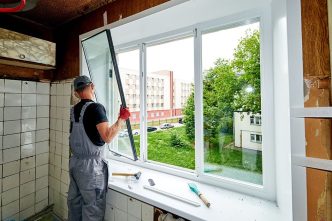Safety Tips for American Weather Emergencies
Written by: Bill Herren
Throughout the United States, various forms of extreme weather can cause considerable property damage, endanger lives and interrupt regular communication or transportation services. Wherever you live, it’s well worth acquainting yourself with the most common forms of severe weather systems affecting your area. Understanding what to expect and planning ahead for worst-case scenarios can significantly improve your experiences, should “the big one” ever hit your community.
Winter storms
Winter storms can range from a bout of steady snowfall to potentially life-threatening blizzard conditions, and can affect any regions with cold winter climates. The primary concern from winter storm weather is maintaining sufficient warmth, whether in the home or in an automobile. Well before winter storm season, you can take precautionary measures by keeping a stock of warm blankets in your vehicle and plenty of reserve heating fuel in your home. Since storms often cause an interruption to regular telephone lines, make a “communication plan” with family or loved ones in advance. During a storm, avoid any unnecessary exposure to extreme weather conditions.
Hurricanes
Primarily affecting the southern Eastern seaboard and the Gulf coast region, hurricanes’ range has more recently spread to include areas further north along the Atlantic coast. While meteorologists can now foresee hurricanes’ projected paths with some foresight, the possibility remains of hurricanes striking a city relatively suddenly, with fairly little time for preparation. As a result, it’s a good idea to prepare at the start of hurricane season by stocking up on reserve supplies and weather-proofing your home as much as possible. Inform yourself of local evacuation sites, in case you find yourself in a hurricane evacuation zone and need to evacuate rapidly.
Earthquakes
Primarily affecting areas located along fault lines, earthquakes can send powerful tremors and interrupt traffic, damage property and cause serious injuries. Before an earthquake strikes, you can take steps to improve the outcome in advance. Secure your living space by keeping heavy furniture anchored and bracing any hanging light fixtures or other items. Likewise, you can strengthen your home by consulting with a contractor or architect on potential improvements to the foundation or any chimneys. Finally, devise a preparedness plan with any family members, so you all know what you will do and where you will go, wherever you may find yourselves at the first signs of trembling.
Thunderstorms
Unlike other forms of severe weather, thunderstorms may strike in practically any climate and region. As a result, it’s universally useful to acquaint yourself with basic storm preparedness steps. As extreme thunderstorms may interfere with power or communication lines, the best precautionary step to take involve stocking up on any basic supplies. A family “storm preparedness kit” may include flashlights and batteries, plentiful drinking water, non-perishable food and a battery-powered or hand-crank powered radio. If your kit includes canned foods, be sure you have a hand-operated can opener on hand as well.
Floods
Flooding is a severe risk in many low-lying regions, especially after severe weather systems. In fact, the “storm surge,” a secondary wave of flooding following hurricanes and severe storms, is often a greater cause of damage and injury than the initial weather system itself. If you live in a region with a high risk of flooding, prepare in advance, as floodwaters can rise rapidly. In addition to investing in flood insurance coverage, you can further prepare your house and your family by making an emergency plan. Stock up on a reserve of drinking water, canned food and other essentials in case you are trapped in your home for an extended period or cut off from regular supply lines. Devise an escape plan as well in case you need to evacuate to a shelter on higher ground.
Tornadoes
While tornadoes typically affect the central area of the United States, colloquially known as “Tornado Alley,” the full region at risk extends all the way from Texas to Michigan, Tennessee to Nebraska. Since tornadoes can form and strike with little warning at all, it’s highly advisable to form a preparedness plan well in advance, especially if you live in a high-risk region. As with many other kinds of extreme weather, one key feature of preparedness is to assemble an emergency kit with flashlights, batteries, food and drinking water. It’s likewise advisable to formulate a family preparedness action plan, identifying where you will gather in case of a sudden tornado and in case communication lines are interrupted.
- Winter Storms & Extreme Cold
- Winter Storm Preparedness
- Winter Weather Checklists
- Winter Weather Preparedness
- Winter Safety & Preparedness
- Hurricane Preparedness – Be Ready
- Virginia Hurricane Evacuation Guide
- The Seven Steps to Earthquake Safety
- CA.gov: Earthquake Preparedness
- Earthquake Safety at Home
- Earthquake Preparedness in Portland: What Can You Do to Prepare for a Major Seismic Event?
- Preparing for “The Big One”
- What to Pack in your Storm Preparedness Kit
- Severe Storm Preparedness Kit Checklist
- Thunderstorm Preparedness
- Thunderstorms and Lightning
- Flood Preparedness and Response
- How to Prepare for a Flood
- Preparation and Recovery: Before A Flood
- Floods: What to do Before a Flood or Flash Flood
- Flooding: Quick Reference Guide
- Kentucky Emergency Management: Preparedness
- Preparedness – Tornadoes
- Tornado Preparedness and Response
- Tornado Preparedness Checklist
- Tornado Preparedness and Safety
| Wood Windows and Doors | Additional Window Options | Home Services |
|---|---|---|


